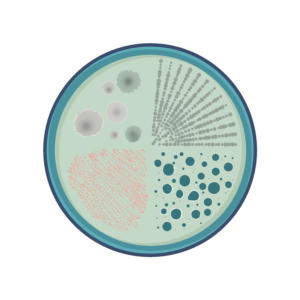Antimicrobial resistance: the next pandemic?
Posted on August 26, 2020 by Michael Devlin
It is now estimated 700,000 people die each year as a result of drug resistant diseases, with this number predicted to increase to over 10 million deaths per year by 2050. The current COVID-19 pandemic appears to have accelerated the threat of antimicrobial resistance (AMR), as many patients admitted to hospitals displaying COVID-19 symptoms are treated with antibiotics to reduce their chances of contracting secondary bacterial infections, making resistant bacteria more common.
This increase in resistance occurs when antibiotics are used on patients and some forms of bacteria die. But resistant bacteria can survive and in some cases begin to multiply. The more we overuse antibiotics, the greater the chances bacteria have to become resistant to them. This results in antibiotics being unable to work against many forms of bacteria which cause disease.
The spread of SARS-CoV-2, the virus that causes COVID-19, has demonstrated the speed at which disease can spread across countries and around the world. In recent years, the growing rate of antimicrobial resistance has caused concerns that the increasing threat posed by ‘superbugs’ – a term used to refer to bacteria that are resistant to all known antibiotics – will hinder our ability to handle another major pandemic. There is now a growing belief that our existing range of antibiotics may be unable to fight against many new biological infections.
Densely-populated areas with poor sanitary conditions and water quality are considered to be hot spots for antimicrobial resistance. The newly published World Health Organization’s (WHO) recommendations offer guidance for countries on how to generate their own locally driven national action plans befitting for their specific regional area. It takes the growing evidence on AMR into account, including research published in the British Medical Journal (BMJ) by Professors Richard Smith and Joanna Coast. They suggest adopting a more conservative and appropriate approach to the use of antibiotics in order to halt the increase of resistance.

However, Professors David Graham and Peter Collignon, of Newcastle University and the Australian National University respectively, warn “the next pandemic might be worse” and that more frugal use of antibiotics alone will not solve the fight against antibiotic resistance, emphasising that global improvements in water quality, sanitation and hygiene may be equally, if not more, important.
Professor Graham says: “The only way we are going to win the fight against antibiotic resistance is to understand and act on all of the pathways that lead to it… this means rapidly improving waste management, sanitation, and water quality on a global scale – especially in emerging and developing countries – or antibiotic resistance will continue to increase, potentially creating the next pandemic.”
The work conducted by Professors Graham, Collignon and others, has demonstrated that antibiotic-resistant genes can move quickly between microbes and via pathways – even in places where antibiotics are not present, including in areas considered to be amongst the last remaining ‘pristine’ regions on earth, such as the polar regions.

An article, co-authored by Professors Graham and Collignon, describes how resistance to existing antibiotics continues to increase, and particularly focuses on how this impacts places with poor sanitary conditions and water quality. The article also discusses how global trade, industrial pollution, hospitals, and the agriculture sector all pose risks as potential avenues or catalysts for antimicrobial resistance.
The pair write: “…there are common roots to disease spread – pollution, poor water quality, and inadequate hygiene. Using fewer antibiotics is critical to reducing resistance. However, without also providing safer sanitation and improved water quality at global scales, resistance will continue to increase, potentially creating the next pandemic. Such a combined approach is central to the new WHO/FAO/OIE recommendations on AMR.”
They further added: “Resistance needs to be seen in a similar light to other global challenges – something that threatens human existence and the planet. As with addressing climate change, protecting biodiversity, or COVID-19, global cooperation is needed to reduce the evolution and spread of resistance.”
The two experts concluded that once better hygiene and sanitary conditions exist on a global scale, our dependence on antibiotics will be reduced as a result of greater access to clean water.
The World Health Organisation (WHO) has recently published new recommendations for tackling the spread of antimicrobial resistance.



